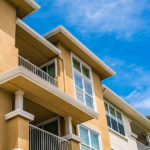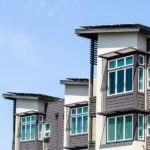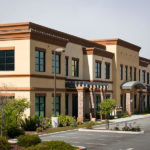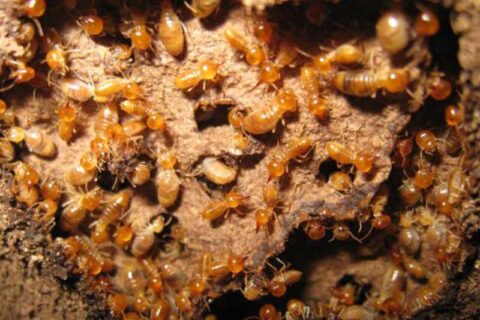Will Termites Eat Live Trees?
There are over 3,000 different species of termites in the world, and just about everybody knows that termites eat wood. When that wood is your house, it’s a problem, but what other kinds of wood do termites eat? Do they ever eat live trees?
Termites are found on every continent except Antarctica, so your chances of encountering them are pretty high. Each year, termites cost property owners in the United States about $5 billion in damages, because they can destroy wood quickly, sometimes causing significant problems before they’re even discovered. In the wild, though, they provide a valuable service. When termites eat wood, what they’re really seeking is dead cellulose, which is found in dead wood. Termites are one of the few creatures that can ingest and process this cellulose, and they’re drawn to rotting wood in fallen trees. By eating these trees, they clean up forests and actually decrease the incidence of forest fires. If you see termites in a live tree, however, it indicates a problem.
Because termites like to eat dead cellulose, finding them in live trees indicates that part of the tree is already dead. It could be the cambium layer, which is the part of the trunk that’s still growing. The cambium cell layer produces new bark and new wood in response to cell-growth stimulating hormones called “auxins,” which are produced by leaf buds at the ends of branches. If this layer is damaged, you need to call in a professional to get to the bottom of it. The right treatment might save your tree, or it might need to be removed. Treating or removing it can help prevent termites from spreading from the tree to your home.
Another thing to consider is that sick trees, infested with termites, become weaker. This makes a termite-infested tree a serious hazard. Eaten from the inside by termites, the tree will become very unstable and too weak even to support itself. If you don’t catch it before this happens, it can fall. Depending on where it lands, it could damage your home, a neighbor’s home, someone’s car, or even a person. In addition to a dead tree, you could be facing legal or liability issues.
A termite-infested tree is hazardous because of the risk of falling, the risk of termites spreading to your home, and the risk of disease or termites spreading to another tree. It’s not always obvious, though, that a tree is infested with termites. It’s important to periodically walk your property, checking your trees for the signs of a termite infestation, so you need to know what those signs are.
- Tiny holes at the bottom of the tree: You’ll have to get a shovel to determine whether termites have invaded your tree. Shovel the dirt away from the bottom, right where the roots are because the tiny holes will be just beneath the soil line. You’ll also see wood shavings that the termites left behind when they dug the holes.
- Discarded wings and carcasses: If your problem is with Formosan termites, you might see discarded wings and dead termites lying around. Just as termite wings in your windowsills means your house has a problem, wings by a tree are a sign the tree is infested.
- Tiny termite eggs: You won’t often see these, because they’re generally protected in the nest, but a female termite can lay thousands of them. They vary from white to yellowish to almost clear and are found in clusters.
- Tubes on tree trunks: You’ll have to look closely to see these because they’re often hidden in cracks or creases in the bark. Look for mud tubes coming up from the ground.
If you have a tree that’s infested with termites, it’s time to call in a tree professional. The right treatment can eliminate the termite infestation before it spreads to another tree or your home. It’s important to note, though, that a termite-infested tree can be a danger to your home. If you’ve got a termite colony in a tree on your property, there’s a high likelihood that termites have already made it to your home or business. Therefore, you should get the building inspected for termites as quickly as possible.
At MightyMite Termite Services, we perform termite inspections to ensure that your home is free of termites. We also work hard to help you keep your home safe from termites, using treatments that are naturally derived and have a low impact on the environment. We diagnose and treat infestations with the most effective methods and unmatched warranties, solving your termite problems the first time, with an industry-best “no call-back rate.” That, combined with our experience, technology, and highly trained professional staff, makes us the leading extermination company in the Bay Area. We understand that your home is your most important investment, so we work hard to provide excellent service, utilizing best practices to solve our customers’ termite problems in Northern California. For more information, call us today at 408.335.7053, email Info@mightymitetermite.com, or contact us through our website.








